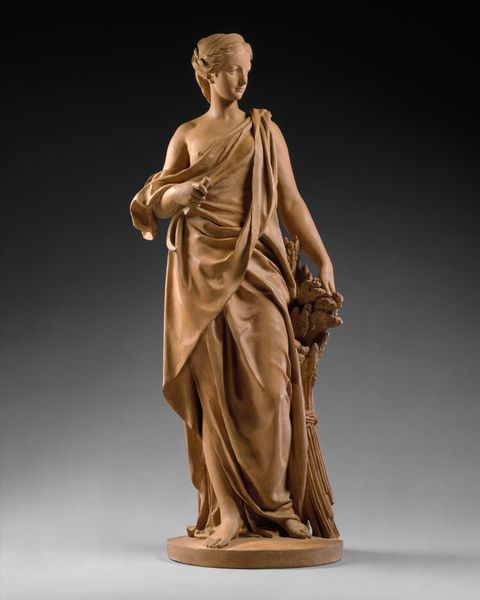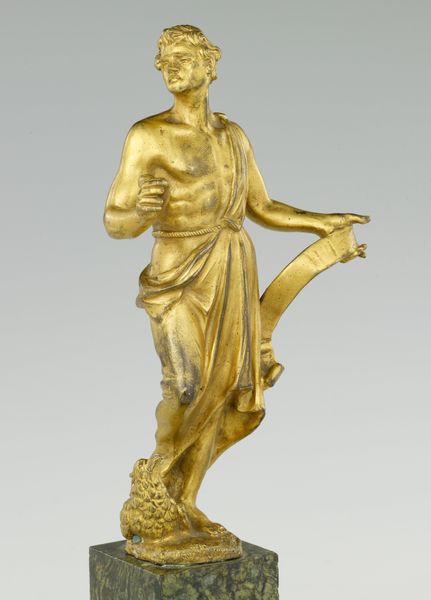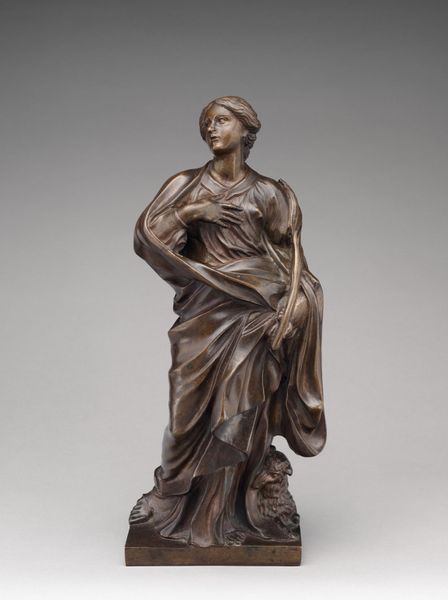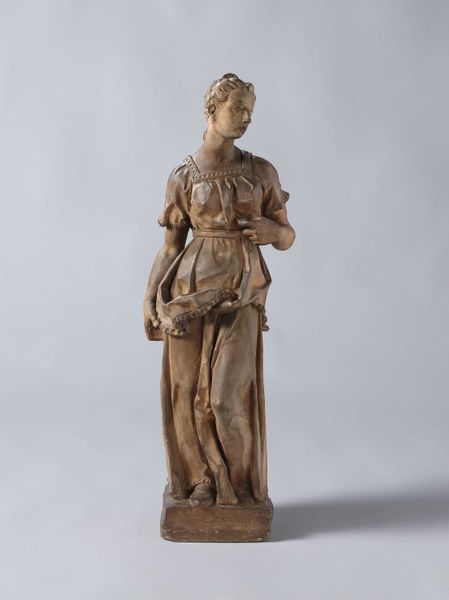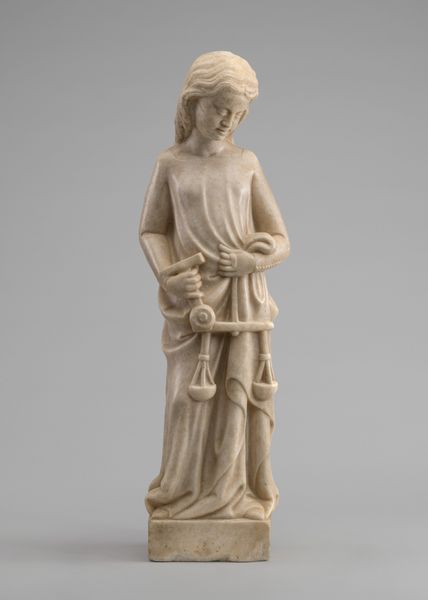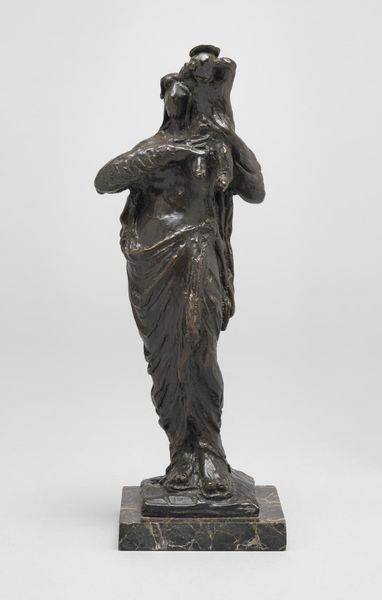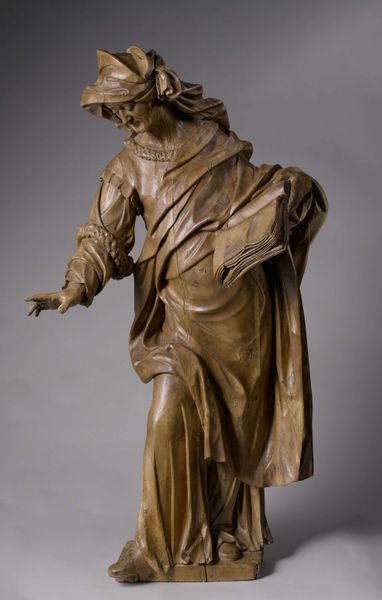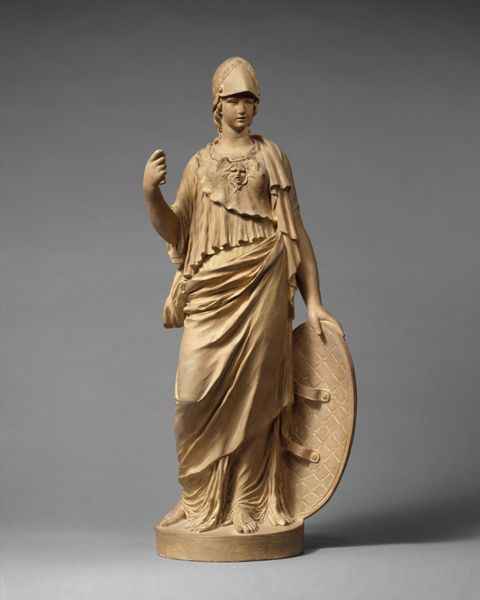
bronze, sculpture
#
portrait
#
neoclacissism
#
sculpture
#
bronze
#
figuration
#
sculpture
#
history-painting
Dimensions: 50.8 × 30.5 × 17.8 cm (20 × 12 × 7 in.)
Copyright: Public Domain
Editor: Standing before Henry Kirke Brown’s "The Filatrice," created in 1850 and cast in bronze, I’m struck by how static it feels, despite depicting an act of labor. How does the context of its production influence our interpretation? Curator: Consider the very materiality of bronze. Its enduring nature, historically linked to monuments and power, contrasts with the often-ephemeral and undervalued labor of spinning, typically a domestic and female-coded task. Brown elevates this everyday activity through his choice of material and Neoclassical style. But is he truly valorizing labor, or romanticizing it within a patriarchal framework? Editor: That’s fascinating. So, the choice of bronze both elevates and, perhaps, complicates our understanding of the work involved in spinning? Curator: Precisely. The polished surface and idealized form conceal the physical effort and skill required for spinning. We must also acknowledge the historical moment, pre-industrial, where such handcraft was on the verge of being displaced by mechanization. Was Brown, perhaps, preserving an image of labor as it was disappearing? What does this bronze commemorate beyond this woman's figure? Editor: So, it becomes less about the woman herself and more about a specific, disappearing form of production, now cast in seemingly eternal bronze. Curator: And therefore abstracted away from her direct labor; it's a symbol as much as a portrait, which also renders the statue very much an artifact of the complex interactions between materials, production methods, and social values. Editor: I see, looking beyond the surface to the web of socio-economic meanings embedded in the materials and methods used. Curator: Absolutely, by considering that angle we might be able to appreciate new facets and nuances to understand artworks like "The Filatrice" at an extended, but in fact more personal and relational context.
Comments
No comments
Be the first to comment and join the conversation on the ultimate creative platform.

